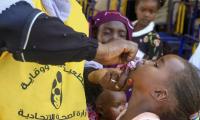KARACHI: Tough and unpopular decisions have helped various countries come out of financial crises including default. No economy is immune to depression, including highly developed ones such as the US, Germany, or Canada. During a depression, a country’s economy can suffer from shrinking GDP, surging unemployment and inflation rates, and social disputes and riots. The International Monetary Fund describes default in simple terms as a broken promise or breach of contract. When a government borrows money from foreign and domestic creditors, it is contractually obliged to pay the interest on those loans. If a payment is missed, this is described as a default.
Defaults happen when governments are not able to – or don’t want to – meet some or all of their debt payments to creditors.
Weakening economies and “reckless spending” are among the factors that can lead to defaults, according to Investopedia, the financial content website. Countries can also face problems if they borrow in a currency other than their own. This means that, if their budget falls short, their central bank can’t print more money to fill the gap.
Dozens of countries poured trillions into market to keep the global economy running, according to foreign media reports.
Starting with the US, the Great Recession began well before 2008. The first signs came in 2006 when housing prices began falling. By August 2007, the Federal Reserve responded to the subprime mortgage crisis by adding $24 billion in liquidity to the banking system.1 By October 2008, Congress approved a $700 billion bank bailout, now known as the Troubled Asset Relief Program.2. By February 2009, Obama proposed the $787 billion economic stimulus package, which helped avert a global depression.
In fact, most of the government funds were used to create the assets that allowed the banks to write down about $1 trillion in losses. The other problem is that there were no “new companies,” i.e. other banks that had the funds to purchase these banks. Even Citigroup—one of the banks that the government had hoped would bail out the other banks—required a bailout to keep going. History has seen Brazil managing to weather the international financial crisis reasonably well, despite having been severely hit initially. Brazil felt the financial crisis most strongly at the end of 2008 and industry was particularly affected. Yet the situation began to improve in the second quarter of 2009. When it comes to the whys and wherefores, the strong institutional framework and a cautious monetary policy have been key to managing the crisis, which has led to inflation being kept under control and on a downward trend.
This may partly be explained by the economic conditions existing at the start of the crisis. In 2006 Brazil had just entered into a more vigorous growth cycle. There were idle capacity and financially-sound companies in many sectors. Consumer debt was low and, in general, consumer liabilities were short term. Unlike the case of Europe and the US, the home mortgage debt was very low. In fact, property loans only accounted for 2.3% of the GDP in December 2008. At the same time, the Central Bank of Brazil had implemented strong prudential regulation since the banking crisis in the 1990s.
Various steps by Barzil saw the the Central Bank quickly providing smaller banks with a strong liquidity cushion. This put them in a stronger position and they could adjust their portfolio without any banks failing. The Brazilian economy began to improve in the second quarter of 2009. One of the most important factors was the perception that inflation, the eternal enemy during recessions, would continue to fall. The soundness of the institutions and the cautious monetary policy was consolidated.
The Argentine Great Depression was an economic recession that took place from 1998 to 2002. It was triggered by the currency crises in East Asia and Russia which sunk foreign investors’ confidence to invest in developing countries. When Argentina’s biggest partner, Brazil, faced an economic crisis due to depreciating real exchange rates, the country plunged into a disordered state, both economically and politically.
To recover from the Great Depression, the government encouraged exports and allowed accessive credit for businesses. With the devalued Peso, Argentine exports became more competitive on the market and imports were discouraged in the country. The government also amended the tax blunder and allocated funds for social welfare, slowly gaining back people’s trust. It also took steps to stabilise the Peso.
The government encouraged local products and provided accessible credit for businesses. It also improved tax collection and invested in social welfare. The peso slowly rose, reaching a 3:1 to the dollar. Meanwhile, agricultural exports and tourism experienced a positive trend. At one point, the inflow of dollars was so high that the government had to intervene to keep the Peso from rising further. The central bank also rebuilt its dollar reserves. By December 2005, foreign currency reserves reached $28 billion. Despite several setbacks, such as a brief energy crisis due to the rising industrial demand, Argentina’s economy bloomed. Various other countries also took drastic steps to cope with recession. China brought down the interest rate for the first time since 2002. Indonesia also brought down its interest rate, besides facilitating commercial banks in promptly getting funds from the central bank. Australi injected $1.5 billion into the banking system that were three times higher than the market’s estimated need. The Bank of Japan also put $29 billion into the financial system.
Members of both groups used automatic weapons against each other
Killed terrorists remained actively involved in targeting LEAs as well as innocent civilians
PPP chief offered condolences to Larkana Hindu Panchayat Chairman, Vice Chairman and Mukhi over Sanjay Kumar’s murder
Maryam Nawaz directed to ensure proper seating arrangements and fans in waiting areas
Emir of Qatar warmly reciprocated prime minister’s Eid greetings and conveyed his best wishes for people of Pakistan
KP govt ordered high-level inquiry into incident and announced compensation of Rs5m for each victim of drone attack







